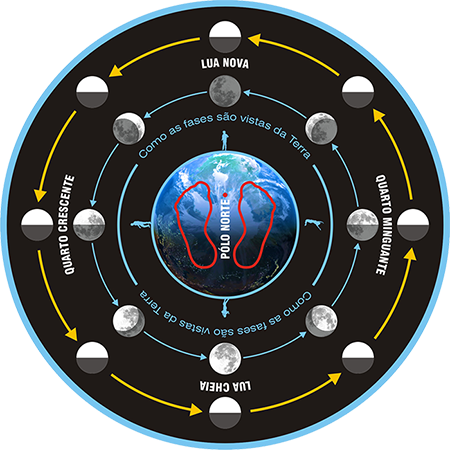 Aparatos interativos 3D, multimídias, vídeos, painéis e uma cenografia do céu compõem a exposição.
Aparatos interativos 3D, multimídias, vídeos, painéis e uma cenografia do céu compõem a exposição. O foco é a astronomia básica, abordando temas como os ciclos das estações do ano, dos dias e das noites e das fases da Lua.
O foco é a astronomia básica, abordando temas como os ciclos das estações do ano, dos dias e das noites e das fases da Lua. Sol da meia-noite em Buldersanden, Tromso, Noruega.
Sol da meia-noite em Buldersanden, Tromso, Noruega. Por quê o inverno no Rio de Janeiro não é tão rigoroso quanto o inverno em Moscou ?
Por quê o inverno no Rio de Janeiro não é tão rigoroso quanto o inverno em Moscou ? Como a luz do Sol chega a Terra ?
Como a luz do Sol chega a Terra ? Você sabe por quê as estações acontecem ? Esta e outras dúvidas são respondidas na exposição.
Você sabe por quê as estações acontecem ? Esta e outras dúvidas são respondidas na exposição.
THE SEASONS OF THE YEAR – EARTH IN MOVEMENT
With 3D interactive apparatus, multimedia, videos, panels, and the scenography of the sky, visitors to the Museum of Astronomy (RJ) unveil curiosities about the seasons of the year, the phases of the moon, and others.
In the Museum of Astronomy and Related Sciences (MAST), located in Rio de Janeiro, visitors can discover some curiosities about the cycles of days and nights, the phases of the moon, and the seasons of the year in different regions of Brazil, the Earth, and other planets of the Solar System, interacting with 3D apparatus, multimedia, videos, panels, and a scenography of the sky. Those interested in seeing the Seasons of the Year: Earth in Movement can go to Rua General Bruce, 586, Bairro Imperial de São Cristóvão. Entrance is free.
Opened in July 2009, the long-term exhibition has the aim of offering elements that can allow the different types of public, especially school and family groups, enrich their conceptions and create more profound questionings of the themes presented. It is intended to popularize the knowledge of the basic phenomena related to the Earth-Moon-Sun System.
"The knowledge of basic astronomy, four centuries after the Galileo's first observations of celestial bodies, could be at a better level, since astronomy, unlike other areas of knowledge, counts on a positive perception of the public. The dissemination of basic astronomy thereby continues to play a leading role," explains the person responsible for the exhibition, Douglas Falcão, from the Coordination of Science Education, MAST.
The exhibition is an improvement of a previous version, which functioning in MAST from 1995 - 2005. At that time research was carried out with the public focused on the theme of learning in museums of science and technology. The modifications currently being implemented are funded by the National Council for Scientific and Technological Development (Conselho Nacional de Desenvolvimento Científico e Tecnológico - CNPq), as part of the 2006 Call for Proposals for Scientific Popularization and Dissemination, and with budgetary funds from MAST. The event counts on the support of the Cultural Association of Friends of the Museum of Astronomy and Related Sciences (SAMAST).
In this way, the exhibition explores new methods of interaction with the public, based on the use of the astronomic quadrant as a means of comprehending scientific concepts. Its panels are visually very simple, with short texts and minimal captions. The catalogue dialogues a lot with the exhibition, presenting more analytical texts with some more reflections.
Back to portuguese version






 1
1 2
2 3
3 4
4 5
5 6
6